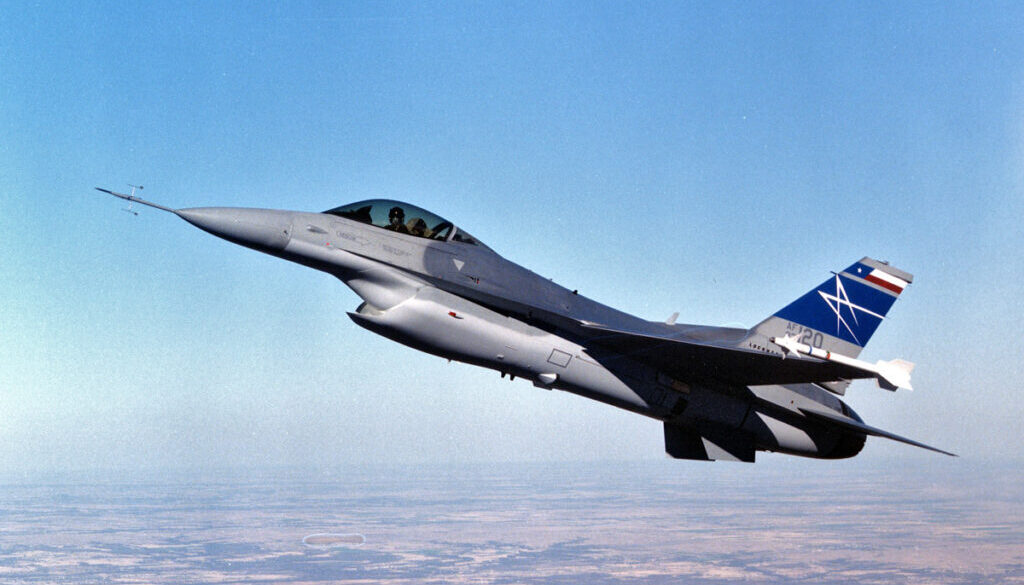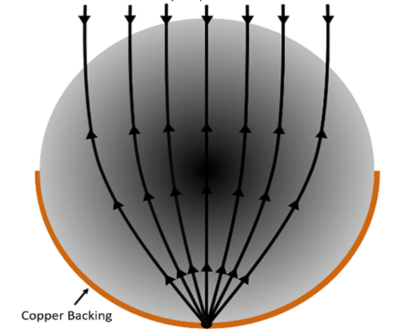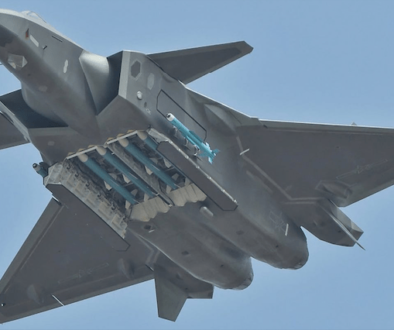Air Intakes
Air intakes are required to capture free stream air, sometimes change its direction and then supply this to the engine. The inlet design should be such that it has minimal loss in energy, decelerate the air entering the engine so that the Mach number at the engine entrance is ≈ 0.4-0.5, provide low drag to the aircraft as a whole, and also improve the stealth characteristics incase of advanced fighter aircrafts.
The basic types of intakes are:-
- Normal shock diffuser or pitot intake,
- Oblique shock diffuser (conical or spike inlet),
- Two-dimensional intake,
- Diverterless intake.
Shock wave
Shock waves are very small regions in the gas where the gas properties change by a large amount. The Mach number and speed of air flow decrease across a shock wave. If the shock wave is perpendicular to the flow direction, it is called a normal shock. When a shock wave is inclined to the flow direction it is called an oblique shock.
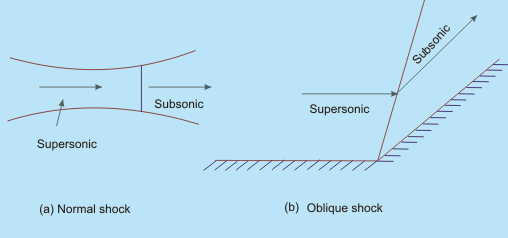
Normal shock diffuser or Pitot intake
The intakes work well subsonically and fairly well at low supersonic speeds. However, this design is not suitable for prolonged operation above M=1.6 (i.e. – 1.6 times the speed of sound). In case of subsonic flow the airflow speed decreases to the required value due to the divergent design, (i.e. the area increases as we move further from the intake opening). At supersonic speeds a shock wave forms in front of the intake which decelerates the incoming flow from supersonic to subsonic speed. Thereafter the airflow speed is reduced by the divergent profile of the intake.
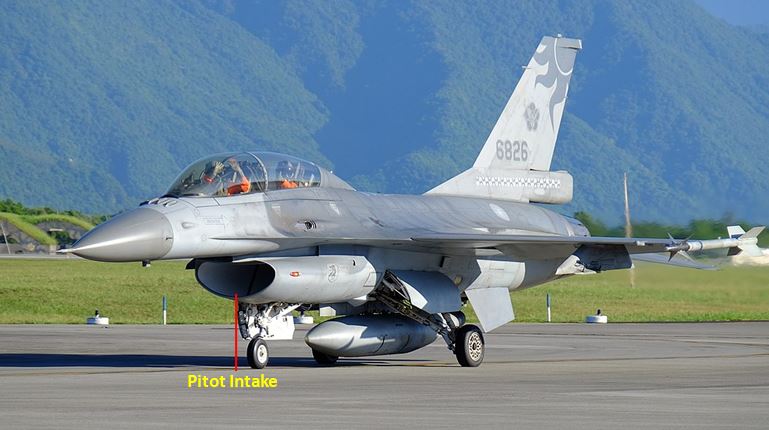
Oblique-shock diffuser (Conical or Spike intake)
Oblique shock diffuser, spike or conical inlet: exploits shock patterns created by the supersonic flow over a cone. The spike inlet is lighter and has lower loss but has higher drag and is mechanically more complex. It decelerates the flow over one or several oblique shocks. The last shock in the intake is a normal shock, which decelerates the flow to subsonic speed. An oblique shock diffuser is optimum is the most efficient during steady level flight but suffers from a huge loss of efficiency with angle of attack and sideslip, i.e.- when the flow is not symmetrical to the axis of the cone but is at an angle to it. This occurs during maneuvering flight.
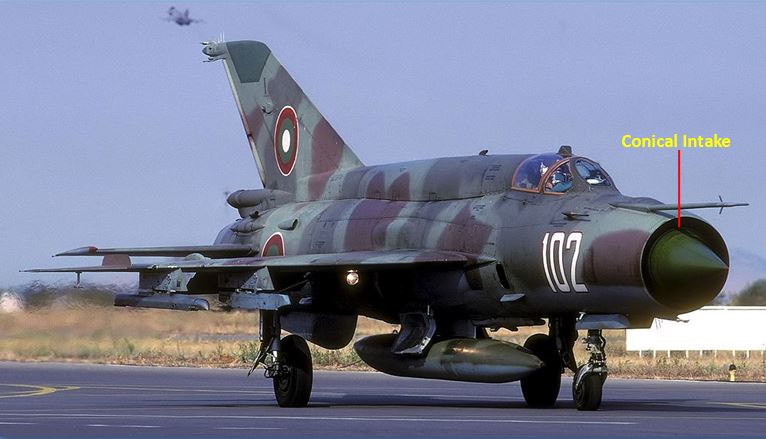
Two-dimensional or Ramp intake
The ramp inlet is one of the type of the supersonic inlets which is rectangular in shape and is designed to generate a number of shock waves to aid the inlet compression process at supersonic speeds. The deflection of the air stream creates a number of oblique shock waves at each change of gradient along the ramp. Air crossing each shock wave suddenly slows to a lower Mach number. The advantages of this intake is its adaptability over a wide range of flow conditions, angles of attack and mass flows, and tailoring of the shock system for optimum efficiency over a wide range of supersonic speeds. However, due to its adaptability it is heavy and complex in construction.
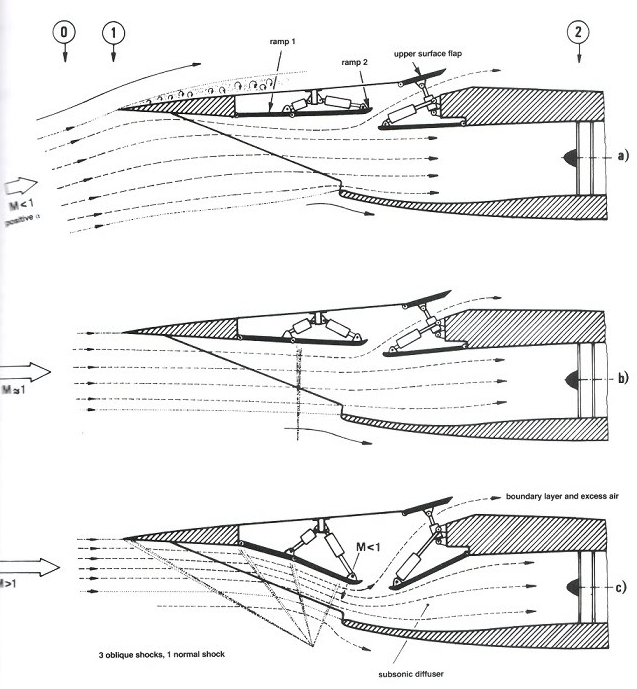
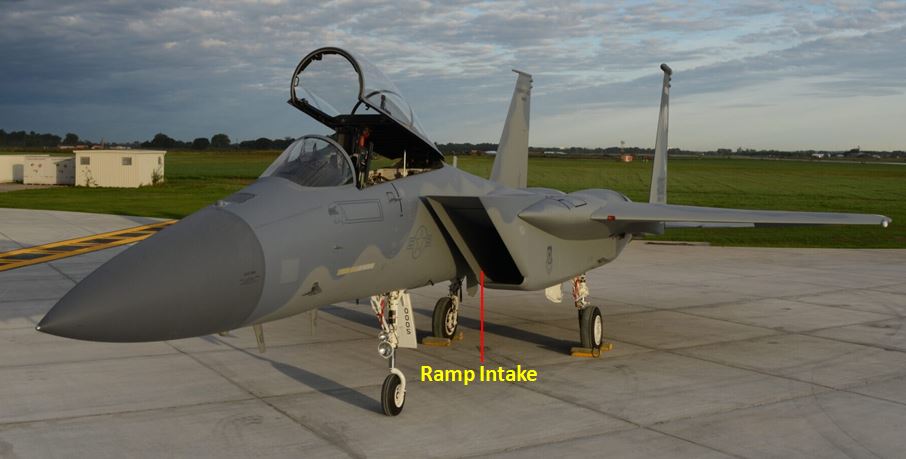
Diverterless supersonic inlet (DSI)
A Diverterless supersonic inlet (DSI) consists of a “bump” and a forward-swept inlet cowl, which work together to divert boundary-layer away from the aircraft’s engine. This eliminates the need for a splitter plate, while compressing the air to slow it down from supersonic to subsonic speeds.
The DSI bump functions as a compression surface and creates a pressure distribution that prevents the majority of the boundary layer air from entering the inlet at speeds up to Mach 2. Traditional aircraft inlets contain many heavy moving parts. In comparison, DSI completely eliminates all moving parts, which makes it far less complex and more reliable than earlier diverter-plate inlets. The removal of moving parts also reduces the overall weight of the aircraft.
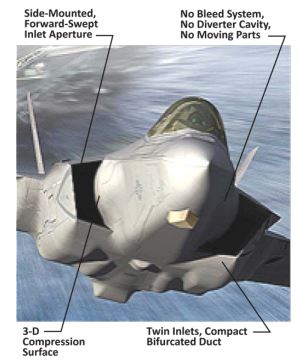
DSI’s also crucially improve the aircraft’s low-observable characteristics (by eliminating radar reflections between the diverter and the aircraft’s skin). Additionally, the “bump” surface reduces the engine’s exposure to radar, significantly reducing a strong source of radar reflection because they provide an additional shielding of engine fans against radar waves. However, a diverterless intake reacts considerably to oblique flow, which is a disadvantage in maneuvering flight especially for two-engine aircraft.
